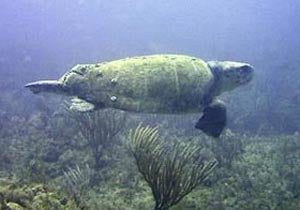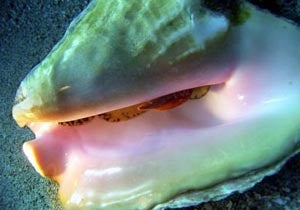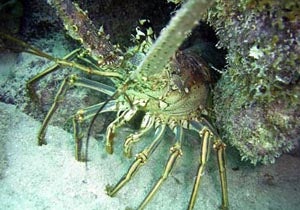Belize: Species at Risk
Green Sea Turtle

Green turtles in the Mesoamerican Reef region are threatened by fisheries bycatch, habitat degradation and the illegal harvest of eggs and adults on nesting beaches. While the harvest of green turtles is illegal in all of the Mesoamerican Reef countries, poaching of meat, eggs, shells and leather does still occur.
In addition, extensive development in the region has destroyed nesting beaches, and a lack of regulation and enforcement continues to pose a problem for the species.
Green turtles feed primarily on seagrasses and macroalgae, and they have historically played an important role as a dominant herbivore of shallow seagrass meadows. The turtles help maintain seagrass beds and make them more productive.
Queen Conch

Queen conch is a marine mollusk found throughout the Mesoamerican Reef region. A targeted commercial species, queen conch is important economically, socially and culturally.
Conch populations in the region have declined in the last 30 years as a result of overexploitation, illegal harvesting of undersized animals and poor regulatory enforcement.
But research has shown that populations of conch within Belize’s Glover’s Reef Marine Reserve are much higher than in the “general use” zone, illustrating the potential of reserves to increase population densities to sustainable levels.
Spiny Lobster

The spiny lobster is a large crustacean found throughout the Caribbean. Spiny lobsters are distinguished by their spiny antennae and lack of claws and they live in crevices of coral reefs, mangrove roots or seagrass beds.
In the Mesoamerican Reef region, lobster is the most valuable marine export product. Although there are regulatory measures to protect the species from unsustainable exploitation, lobster populations are declining, which could spell economic hardship in the region.

